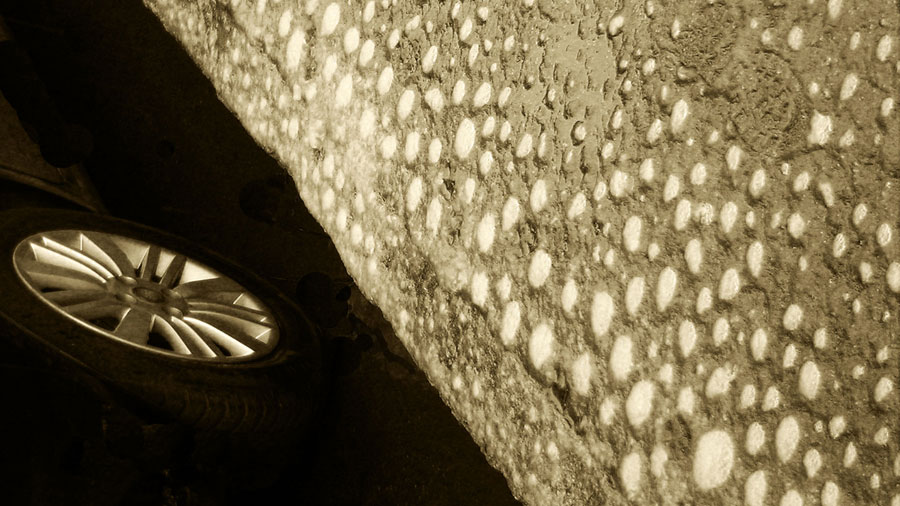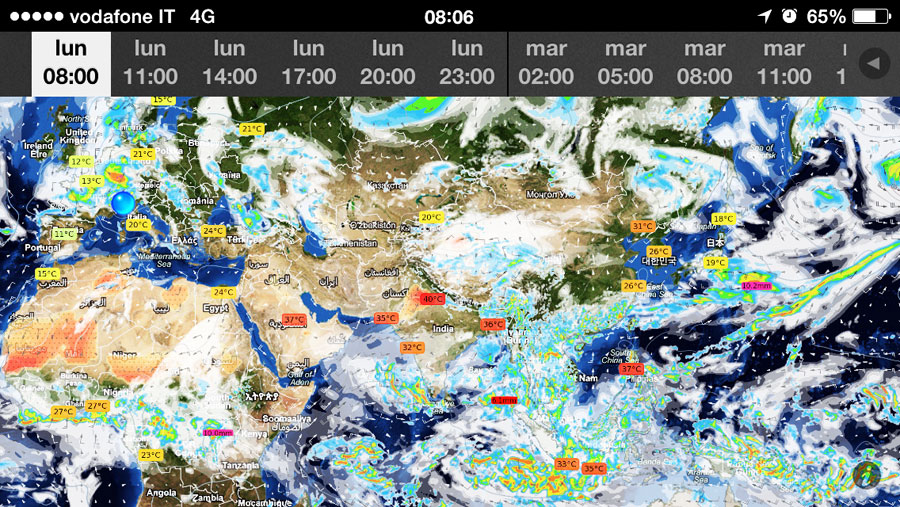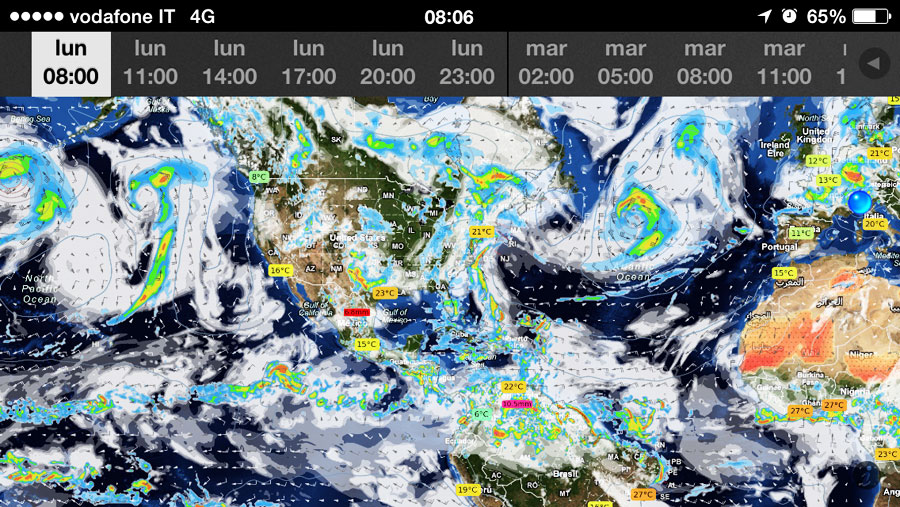Global warming
It’s not a spaceship orbiting around an Exoplanet, but a sidewalk, in 2013 winter time, in via Bartolomeo d’Alviano, in Milan, near which was parked a car: as a matter of fact you can notice, on the upper right area of my picture, a passer-by’s shoe print, so neat – tap the link to watch the larger image – that a modern Sherlock Holmes would be able to trace its owner from this “sole” hint.
The interesting fact though, is, that this kind of “exo” concrection of air bubbles trapped inside the sidewalk sleet, was an event which I hadn’t ever witnessed before in my life. A peculiar weather, in those days, a sequence of cold – warm – cold temperatures, had spurred such a weird iced structure.
Planet Earth current high humidity, produces – according to seasons, Continents and their orography – occasional torrential downpours and flash floods, heavy snowstorms, or, an apparent oxymoron, record drought. The May 2016 wild fires, even in Boreal forests, according to Canadian Forest Service experts, have also been fuelled by the trees underbrush in perennial growth since the previous century, that is, since countries have adopted a worldwide policy of fires shutdown to safeguard areas becoming more and more anthropized.
Nowadays Global Warming warnings can be seen, anywhere, in events both small – as on this sidewalk – or huge, as in the beginning of Summer permafrost collapse episodes in Siberia, discovered by a satellite in 2014, events thought by geologists to have sprung up during two very hot Siberian Summers: 2012 and 2013 with +5 C above average, while in February 2016 it has already been recorded + 10 C above the average in the Barents Sea with craters up to 60 meters wide. In the crater near-by areas has been found a peak of 9,5% of methane, a gas being ascertained as one of the Earth rising temperature culprits.
Two Global Weather screenshots – East and West side of the Planet – on Monday May 30, 2016, at 8 am, from my smartphone via an useful App, WeatherMap+, where Milan is indicated with a big blue sphere. Even non-experts can understand how worryingly intense is Earth’s humidity.
Below: one of the Siberia largest and deepest permafrost craters. They are formed by the collapsing of high terrain mounds bulging under increased methane gas pressure: the crater’s rim is the leftover of the basal area of that mound. This spooky phenomenon of Tundra “degassing” has been reported in articles appeared on the The Siberian Times and Washington Post.
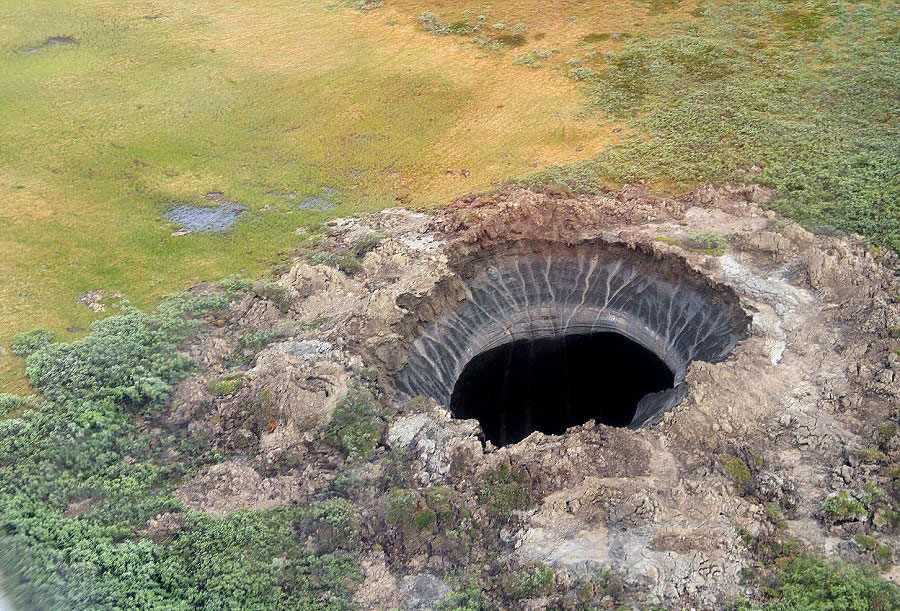
A hole seen in Winter; at the bottom the oozing summer water has now become an iced lake
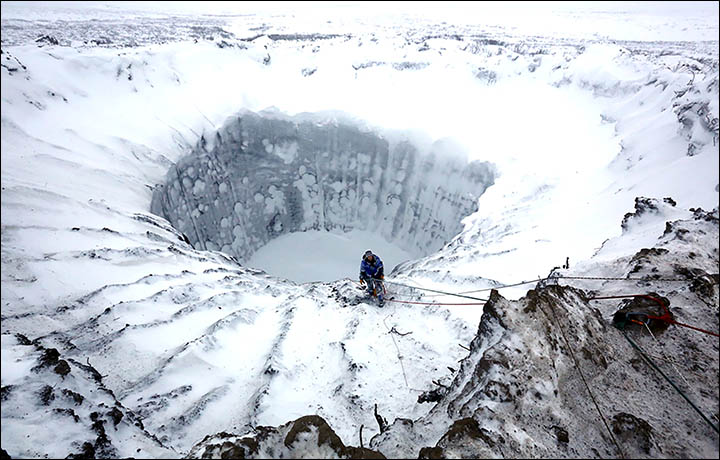
Russian geologists recording data inside a permafrost crater 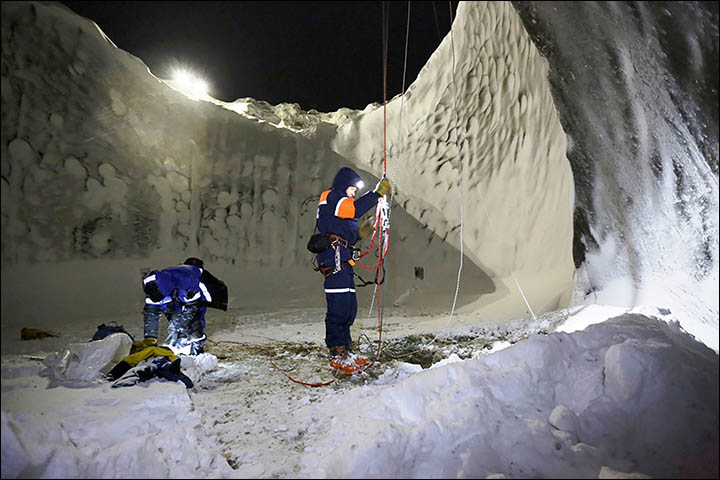
This apocalyptic issue had spurred me to write, in September 2009, a short story entitled “A really unusual coincidence“.
